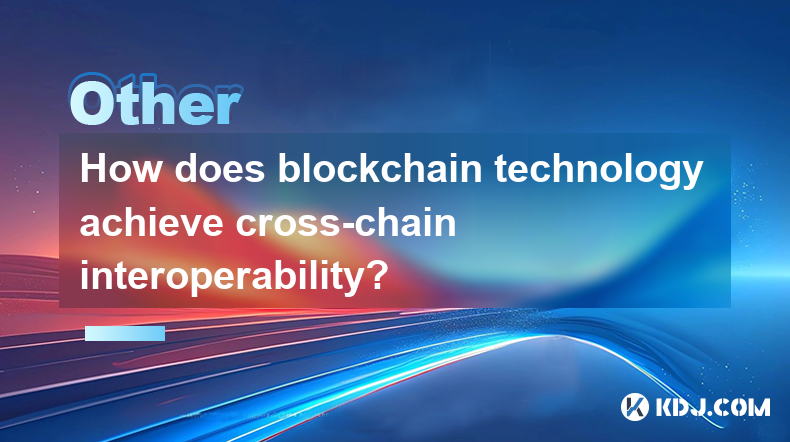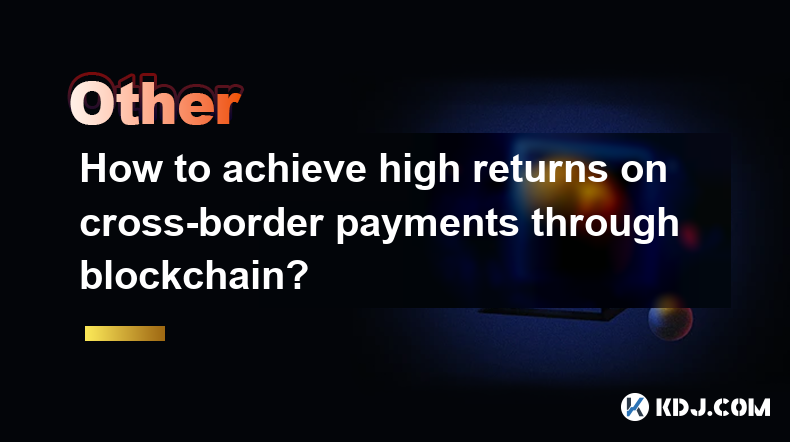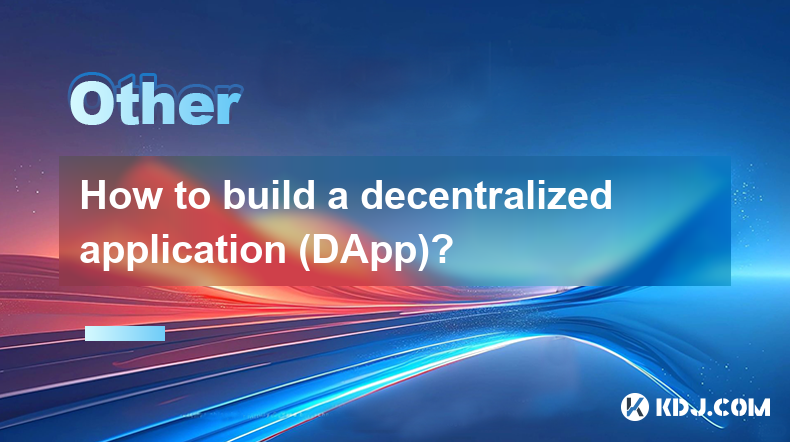-
 Bitcoin
Bitcoin $84,359.2063
-0.81% -
 Ethereum
Ethereum $1,617.0311
-1.41% -
 Tether USDt
Tether USDt $0.9998
0.01% -
 XRP
XRP $2.1504
0.60% -
 BNB
BNB $584.7225
-1.96% -
 Solana
Solana $130.2510
-0.19% -
 USDC
USDC $0.9999
0.00% -
 Dogecoin
Dogecoin $0.1656
-0.47% -
 TRON
TRON $0.2534
2.58% -
 Cardano
Cardano $0.6503
-0.59% -
 UNUS SED LEO
UNUS SED LEO $9.3795
0.51% -
 Chainlink
Chainlink $12.9068
-1.56% -
 Avalanche
Avalanche $19.9475
-1.25% -
 Stellar
Stellar $0.2454
0.84% -
 Sui
Sui $2.2760
-2.85% -
 Shiba Inu
Shiba Inu $0.0...01222
-2.34% -
 Toncoin
Toncoin $2.9042
-4.04% -
 Hedera
Hedera $0.1679
-2.29% -
 Bitcoin Cash
Bitcoin Cash $346.3232
-1.40% -
 Litecoin
Litecoin $78.8538
0.24% -
 Polkadot
Polkadot $3.7541
1.45% -
 Dai
Dai $1.0000
-0.02% -
 Hyperliquid
Hyperliquid $15.8717
-2.48% -
 Pi
Pi $0.7535
2.31% -
 Bitget Token
Bitget Token $4.2993
-2.09% -
 Ethena USDe
Ethena USDe $0.9990
-0.01% -
 Monero
Monero $204.2062
-0.52% -
 Uniswap
Uniswap $5.4283
-1.40% -
 OKB
OKB $53.0899
-1.34% -
 Pepe
Pepe $0.0...07536
1.71%
How does blockchain technology achieve cross-chain interoperability?
Cross-chain interoperability, crucial for asset transfer between independent blockchains, utilizes methods like atomic swaps (peer-to-peer exchange), hash-locking (cryptographic security), sidechains (scalability enhancement), and centralized/decentralized bridges. Security and scalability remain key challenges.
Mar 03, 2025 at 02:00 pm

How Does Blockchain Technology Achieve Cross-Chain Interoperability?
Key Points:
- The Problem of Interoperability: Different blockchains operate independently, limiting the transfer of assets and data between them. Cross-chain interoperability aims to bridge this gap.
- Key Approaches to Cross-Chain Interoperability: Several methods exist, including atomic swaps, hash-locking, sidechains, and bridges (both centralized and decentralized). Each has its own strengths and weaknesses regarding speed, security, and cost.
- Atomic Swaps: A direct exchange of assets between two blockchains without the need for intermediaries. Relies on cryptographic techniques and smart contracts.
- Hash-Locking: A mechanism that uses cryptographic hashing to ensure the secure and atomic exchange of assets. It’s often a component of other cross-chain solutions.
- Sidechains: Separate blockchains that are pegged to a main chain, allowing for faster transactions and greater scalability. Security depends on the design and implementation of the sidechain.
- Bridges: Facilitate asset transfers between different blockchains, either through centralized custodians or decentralized networks of validators. Decentralized bridges are generally preferred for security reasons.
- Challenges and Considerations: Security, scalability, trust, and regulatory compliance are significant challenges in achieving robust cross-chain interoperability.
- Atomic Swaps: A Peer-to-Peer Exchange
Atomic swaps represent a direct, peer-to-peer exchange of cryptocurrencies between different blockchains without relying on a third-party intermediary. This eliminates the need for trust in a central authority, enhancing security and reducing counterparty risk. The process hinges on the use of cryptographic hash functions and time-locked transactions.
The mechanism typically involves two parties, Alice and Bob, who want to exchange tokens on their respective blockchains. Alice wants to send her tokens (e.g., Bitcoin on the Bitcoin blockchain) to Bob, while Bob wants to send his tokens (e.g., Ethereum on the Ethereum blockchain) to Alice. Both parties agree on a cryptographic hash function and a secret key. This secret key is crucial; only its knowledge allows either party to unlock and claim the other's cryptocurrency.
Before the exchange, Alice and Bob create and broadcast transactions on their respective blockchains. These transactions are contingent on the other party's commitment. Alice's transaction includes a hash of the secret key and is time-locked, meaning it can only be claimed after a certain period, preventing double-spending. Bob's transaction on the Ethereum blockchain mirrors this, incorporating the same hash and time lock. Once both transactions are confirmed on their respective blockchains, each party reveals the secret key. This allows both Alice and Bob to claim the other's cryptocurrency. The entire process is atomic, meaning either both exchanges happen successfully or neither does. This is crucial for security.
However, atomic swaps are not without limitations. They primarily support cryptocurrencies with similar technical architectures and functionalities. The implementation can be complex, and the process might be slow compared to other cross-chain solutions due to blockchain confirmation times. Furthermore, the need for both parties to be online simultaneously can present a practical challenge. Despite these limitations, atomic swaps represent a significant advancement in decentralized cross-chain interoperability. Their ability to provide a trustless and secure exchange mechanism makes them an important component of the broader cross-chain landscape. Ongoing research is focusing on improving their efficiency and expanding their applicability to a wider range of cryptocurrencies.
- Hash-Locking: Securing Cross-Chain Transactions
Hash-locking is a cryptographic technique that serves as a fundamental building block for many cross-chain interoperability solutions. It leverages the properties of cryptographic hash functions to create a secure and verifiable commitment to a transaction, ensuring that assets are exchanged atomically between different blockchains.
At its core, hash-locking involves the use of a cryptographic hash function to create a unique fingerprint of a secret value. This secret value, known only to the parties involved in the transaction, acts as the key to unlock the assets. The hash of this secret value, however, is publicly shared, allowing verification of the transaction's integrity without revealing the secret itself.
In a cross-chain context, Alice and Bob might use hash-locking to secure an exchange. Alice locks her assets on her blockchain using the hash of the secret key as a condition for release. Similarly, Bob locks his assets on his blockchain using the same hash. Once both transactions are confirmed, Alice and Bob reveal the secret key, proving that they both committed to the exchange. This revelation unlocks both transactions simultaneously, ensuring the atomic nature of the exchange. If one party fails to reveal the secret key, the other party's assets remain locked, preventing loss.
The strength of hash-locking lies in its reliance on the one-way nature of cryptographic hash functions. It’s computationally infeasible to reverse a hash function to determine the original secret value, thus protecting the security of the assets during the exchange. Hash-locking is often combined with other techniques like time locks to enhance security and prevent denial-of-service attacks.
However, hash-locking alone doesn't solve all cross-chain challenges. It requires careful implementation to avoid vulnerabilities, and its efficiency can be limited by the speed of blockchain confirmations. Nonetheless, its use as a foundational cryptographic mechanism underscores its importance in the pursuit of secure and efficient cross-chain interoperability. It's a crucial component in many more sophisticated cross-chain protocols.
- Sidechains: Scaling and Extending Blockchain Functionality
Sidechains are independent blockchains that are linked to a main blockchain (often referred to as the "parent" or "main" chain). They provide a mechanism to enhance scalability and introduce new functionalities without directly impacting the security or performance of the main chain. This approach offers a compromise between the security of the main chain and the need for greater transaction throughput and flexibility.
The connection between the sidechain and the main chain is typically established through a two-way "peg" mechanism. This peg allows assets to be transferred between the main chain and the sidechain. This transfer is usually secured through cryptographic techniques, often involving multi-signature schemes or other consensus mechanisms to ensure the integrity of the process. The design of the peg is critical to the security of the sidechain; a compromised peg could allow for the theft of assets from either the main chain or the sidechain.
Sidechains offer several advantages. They can provide significantly faster transaction speeds and lower fees than the main chain, as they are not burdened by the same level of security and consensus requirements. They also allow for the implementation of novel functionalities or consensus mechanisms that may not be suitable for the main chain, such as different tokenomics or privacy features. For example, a sidechain could be used to test new features before deploying them to the main chain, reducing the risk of disruptions.
However, sidechains also introduce security concerns. The security of a sidechain is dependent on its own design and implementation, and it’s not directly guaranteed by the security of the main chain. A compromised sidechain could potentially lead to the loss of assets. Furthermore, the peg mechanism itself can become a point of vulnerability, particularly if not carefully designed and secured. The complexity of managing and maintaining a sidechain also presents a challenge, requiring dedicated resources and expertise.
The choice between using a sidechain and other cross-chain solutions depends on the specific needs and priorities of the project. If high throughput and flexibility are prioritized, and the associated security risks can be adequately mitigated, sidechains can be a valuable tool for expanding the capabilities of a blockchain ecosystem.
- Bridges: Connecting Diverse Blockchain Ecosystems
Bridges are mechanisms designed to facilitate the transfer of assets and data between different blockchains. They serve as a crucial link in achieving cross-chain interoperability, enabling the movement of value and information across diverse blockchain ecosystems. Bridges can be broadly categorized into centralized and decentralized bridges, each with its own set of advantages and disadvantages.
Centralized bridges rely on a trusted third-party custodian to hold and manage the assets during the transfer process. The custodian acts as an intermediary, receiving assets on one blockchain and releasing them on another. This approach simplifies the transfer process and can offer faster transaction times, but it introduces a significant security risk. The custodian holds a large amount of value, making it a tempting target for hackers. A compromise of the custodian could lead to the loss of all assets held in the bridge.
Decentralized bridges, on the other hand, aim to eliminate the reliance on a central authority. They typically use a network of validators or nodes to secure the transfer process. These validators participate in a consensus mechanism to verify the authenticity of the transactions and ensure the integrity of the asset transfer. This approach enhances security and reduces the risk of single points of failure, but it can be more complex to implement and may result in slower transaction speeds compared to centralized bridges.
The choice between a centralized and decentralized bridge depends on the trade-off between security and speed. While centralized bridges offer faster transactions, they sacrifice security. Decentralized bridges offer greater security but might be slower. The design and implementation of the bridge's security mechanisms are crucial regardless of whether it's centralized or decentralized. This includes considerations such as the number of validators, the consensus mechanism used, and the security protocols employed to protect against various attacks. Moreover, bridges often need to address issues of scalability and usability to ensure they can handle a large volume of transactions and remain user-friendly.
FAQs:
Q: What are the main challenges in achieving cross-chain interoperability?
A: The main challenges include ensuring security (preventing hacks and exploits), maintaining scalability (handling a large volume of transactions), establishing trust (between different blockchains and participants), and complying with regulations (which vary across jurisdictions). The complexity of different blockchain architectures and consensus mechanisms also poses significant technical hurdles.
Q: Are atomic swaps suitable for all types of cryptocurrencies?
A: No, atomic swaps currently work best for cryptocurrencies with similar technical architectures and functionalities. They are more challenging to implement for cryptocurrencies with significantly different designs or consensus mechanisms.
Q: How secure are decentralized bridges compared to centralized bridges?
A: Decentralized bridges are generally considered more secure than centralized bridges because they eliminate the single point of failure associated with a central custodian. However, the security of a decentralized bridge still depends on the robust implementation of its consensus mechanism and security protocols.
Q: What are the advantages of using sidechains?
A: Sidechains offer advantages in scalability, allowing for faster transaction speeds and lower fees compared to the main chain. They also enable the implementation of new functionalities or consensus mechanisms without affecting the main chain's security.
Q: What is the role of hash-locking in cross-chain solutions?
A: Hash-locking is a crucial cryptographic technique used to ensure the atomic nature of cross-chain transactions. It guarantees that assets are exchanged securely and only if both parties fulfill their obligations. It's a building block for many more sophisticated cross-chain protocols.
Disclaimer:info@kdj.com
The information provided is not trading advice. kdj.com does not assume any responsibility for any investments made based on the information provided in this article. Cryptocurrencies are highly volatile and it is highly recommended that you invest with caution after thorough research!
If you believe that the content used on this website infringes your copyright, please contact us immediately (info@kdj.com) and we will delete it promptly.
- XRP Could Hit $30 This Cycle, Analyst Claims — Here's Why
- 2025-04-14 03:25:12
- Chainlink Integrates Pi Network Into Its Ecosystem
- 2025-04-14 03:25:12
- BlockDAG (BDAG) Surges Forward as Dogecoin (DOGE) Whales Fuel Hopes for 270% Rally
- 2025-04-14 03:20:12
- MAGACOIN FINANCE Could Be 2025's Early DOGE
- 2025-04-14 03:20:12
- Not All Top Trending Crypto Coins Are Popular for the Same Reasons
- 2025-04-14 03:15:12
- Shiba Inu (SHIB) Attempts a Comeback as BlockDAG Rewrites the Script With a Record-Breaking $214M Presale
- 2025-04-14 03:15:12
Related knowledge

How to achieve high returns on cross-border payments through blockchain?
Apr 12,2025 at 05:57pm
How to Achieve High Returns on Cross-Border Payments Through Blockchain? Cross-border payments have traditionally been plagued by high fees, slow processing times, and a lack of transparency. However, the advent of blockchain technology offers a promising solution to these issues, potentially allowing for high returns on such transactions. Blockchain te...

How to achieve identity verification and profit through blockchain technology?
Apr 12,2025 at 10:35pm
Achieving identity verification and profit through blockchain technology involves understanding the underlying principles of blockchain, exploring specific applications that facilitate identity verification, and leveraging these technologies to generate profit. This article will delve into these aspects, providing a comprehensive guide on how to navigat...

How to achieve passive income through blockchain?
Apr 13,2025 at 09:00pm
Achieving passive income through blockchain technology has become an increasingly popular strategy among cryptocurrency enthusiasts and investors. Blockchain technology offers a decentralized platform that can be utilized to generate income with minimal ongoing effort. This article will explore various methods through which you can achieve passive incom...

How to achieve true ownership of virtual assets in blockchain games?
Apr 13,2025 at 03:35pm
Achieving true ownership of virtual assets in blockchain games is a topic that has garnered significant attention within the cryptocurrency community. The promise of blockchain technology lies in its ability to provide verifiable ownership and control over digital assets, which is particularly appealing in the gaming sector where players seek to own, tr...

How to build a decentralized application (DApp)?
Apr 14,2025 at 01:01am
Building a decentralized application (DApp) involves several key steps and considerations that are crucial for ensuring the application's functionality, security, and decentralization. This guide will walk you through the process of creating a DApp, from conceptualization to deployment. Understanding the Basics of DAppsBefore diving into the development...

How to choose a potential blockchain startup?
Apr 13,2025 at 06:29pm
Choosing a potential blockchain startup involves a thorough evaluation of several key factors to ensure that your investment or partnership is well-founded. This article will guide you through the process of selecting a promising blockchain startup by examining crucial aspects such as the team's expertise, the project's technology, market potential, and...

How to achieve high returns on cross-border payments through blockchain?
Apr 12,2025 at 05:57pm
How to Achieve High Returns on Cross-Border Payments Through Blockchain? Cross-border payments have traditionally been plagued by high fees, slow processing times, and a lack of transparency. However, the advent of blockchain technology offers a promising solution to these issues, potentially allowing for high returns on such transactions. Blockchain te...

How to achieve identity verification and profit through blockchain technology?
Apr 12,2025 at 10:35pm
Achieving identity verification and profit through blockchain technology involves understanding the underlying principles of blockchain, exploring specific applications that facilitate identity verification, and leveraging these technologies to generate profit. This article will delve into these aspects, providing a comprehensive guide on how to navigat...

How to achieve passive income through blockchain?
Apr 13,2025 at 09:00pm
Achieving passive income through blockchain technology has become an increasingly popular strategy among cryptocurrency enthusiasts and investors. Blockchain technology offers a decentralized platform that can be utilized to generate income with minimal ongoing effort. This article will explore various methods through which you can achieve passive incom...

How to achieve true ownership of virtual assets in blockchain games?
Apr 13,2025 at 03:35pm
Achieving true ownership of virtual assets in blockchain games is a topic that has garnered significant attention within the cryptocurrency community. The promise of blockchain technology lies in its ability to provide verifiable ownership and control over digital assets, which is particularly appealing in the gaming sector where players seek to own, tr...

How to build a decentralized application (DApp)?
Apr 14,2025 at 01:01am
Building a decentralized application (DApp) involves several key steps and considerations that are crucial for ensuring the application's functionality, security, and decentralization. This guide will walk you through the process of creating a DApp, from conceptualization to deployment. Understanding the Basics of DAppsBefore diving into the development...

How to choose a potential blockchain startup?
Apr 13,2025 at 06:29pm
Choosing a potential blockchain startup involves a thorough evaluation of several key factors to ensure that your investment or partnership is well-founded. This article will guide you through the process of selecting a promising blockchain startup by examining crucial aspects such as the team's expertise, the project's technology, market potential, and...
See all articles


























































